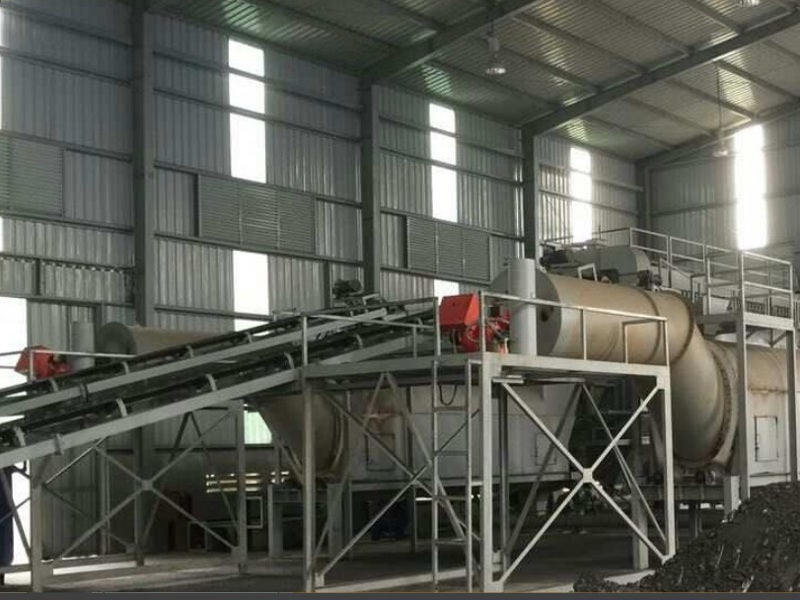Siviour graphite project is a high-grade open-pit mine planned to be developed in Eyre Peninsula, Australia. Ranked one of the world’s biggest graphite deposits, the Siviour mine will be developed and operated by Renascor Resources.
A pre-feasibility study (PFS) for the project was completed in March 2018, while an optimised development plan (ODP) was announced in May 2019. The South Australian Minister for Energy and Mining approved mining lease for the project in April 2019.
Renascor Resources also completed a definitive feasibility study (DFS) in November 2019 which calls for the development of the project in two stages.
Annual graphite production in stage one is estimated to be 80,000 tonnes per annum (tpa) for the initial four years of 40-year mine life. Production will be expanded to 144,000tpa in stage two during the rest of the mine life.
The capital expenditure for stage one and stage two are estimated to be £64m ($82m) and £42m ($54m) respectively.
Siviour graphite project geology and location
The Siviour graphite project site is a part of Renascor’s Arno graphite project. It is located approximately 15km from the township of Arno Bay, 150km of Whyalla, and 120km northwest of Port Lincoln.
The Siviour graphite deposits are situated within unique shallow, flat-lying orientation at the Gawler Craton Geological Province, which contains volcanic, sedimentary, and igneous rocks. The Basement geology is dominated by the Hutchison Group rocks.
Most of the mineralization is hosted within the Meso-proterozoic sediments of the Hutchison Group. Graphite is contained in the graphitic pelitic schists.
Siviour graphite project reserves
The proven and probable ore reserves at Siviour graphite project are estimated to be 45.2Mt, grading 7.9% total graphitic carbon (TGC). It is estimated to contain 3.6Mt (million tonnes) of contained graphite.
Mining at Siviour graphite project
Open-pit mining method with conventional truck and excavator, including drilling and blasting, will be carried out at the Siviour graphite project.
The mine is planned to be developed in two stages, with the first stage including small-scale operations during the first three years. Large-scale production is proposed to be undertaken in the second stage, for the remainder of the mine life.
Processing
The ore will be processed in two identical 825,000tpa processing plants, with a combined production capacity of 1.65Mtpa. It will be conveyed to the crushed ore stockpile and crushed in a jaw crusher followed by secondary and tertiary stages of crushing.
The first stage is estimated to have a throughput of 825,000tpa, which will be doubled in the second stage. A 200,000tpa plant will be used for the first three years of small-scale production.
The crushed ore will then be grinded, followed by flotation and regrind circuits, where it will undergo roughing and scavenging. Further, it will be passed through six stages of cleaning and five stages of regrind.
The final concentrates will be forwarded to a thickener and then filtered, dried, and screened into five size fractions. It will be moved to a hopper and bagged in one-tonne bulka bags for transportation to the Port Adelaide.
Graphite off-take from Siviour
Renascor has entered a non-binding memorandum of understanding (MoU) with Qingdao Chenyang Graphite, in April 2018, for the sale of up to 30,000t of graphite concentrates from the Siviour project.
Qingdao Chenyang has agreed to purchase up to 10,000t of graphite concentrates from stage one and up to 30,000t from stage two.
Renascor also initiated an agreement with Sicona Battery Technologies on a plan to develop battery anode material using the graphite output from the Siviour mine in December 2019.
Financing
Atradius Dutch State Business (Atradius), the export credit agency (ECA) of Netherlands, issued a letter of interest (LoI) to support the project development as part of the ECA scheme. The project will receive approximately 60% of project capital expenditure under the scheme.
Project infrastructure
Siviour graphite project can be accessed by the unsealed road connecting to the sealed Lincoln highway, approximately 8km from the mine site.
Electricity supply for the first three years will be made by using diesel-fuelled generators. Power will be sourced from the existing 11-33kV grid system owned and operated by SA Power Networks, following the start of the 1.65Mtpa processing plant. The existing transmission line is proposed to be extended by an additional 14km.
Water will be supplied from an existing water pipeline owned and operated by SA Water. A reverse osmosis plant will supply water for the 1.65Mtpa plant.
Other infrastructure of the project includes tailings storage facility (TSF) and administrative buildings.
Contractors involved
Royal IHC, in partnership with Wave International, acted as the study manager and supervising engineers for the DFS of the Siviour graphite project.
Optiro provided mineral resource estimate, while Goudie Hall Consulting was engaged for metallurgical test work and AMC Consultants provided geotechnical consulting services.
Renascor prepared the project’s pre-feasibility study with support from various consultants including Optiro, Goudie Hall Services, Minnovo, Optima Consulting and Contracting, Groundwater Science, BS&G, and George Wilby.





